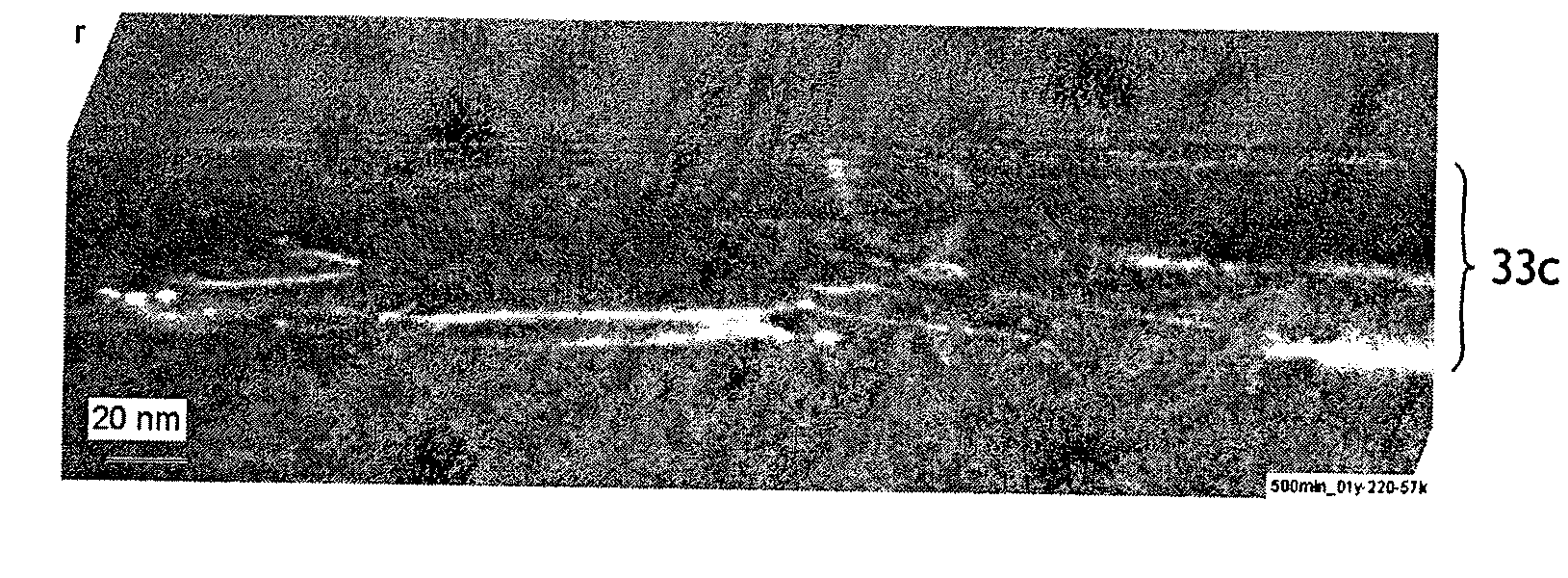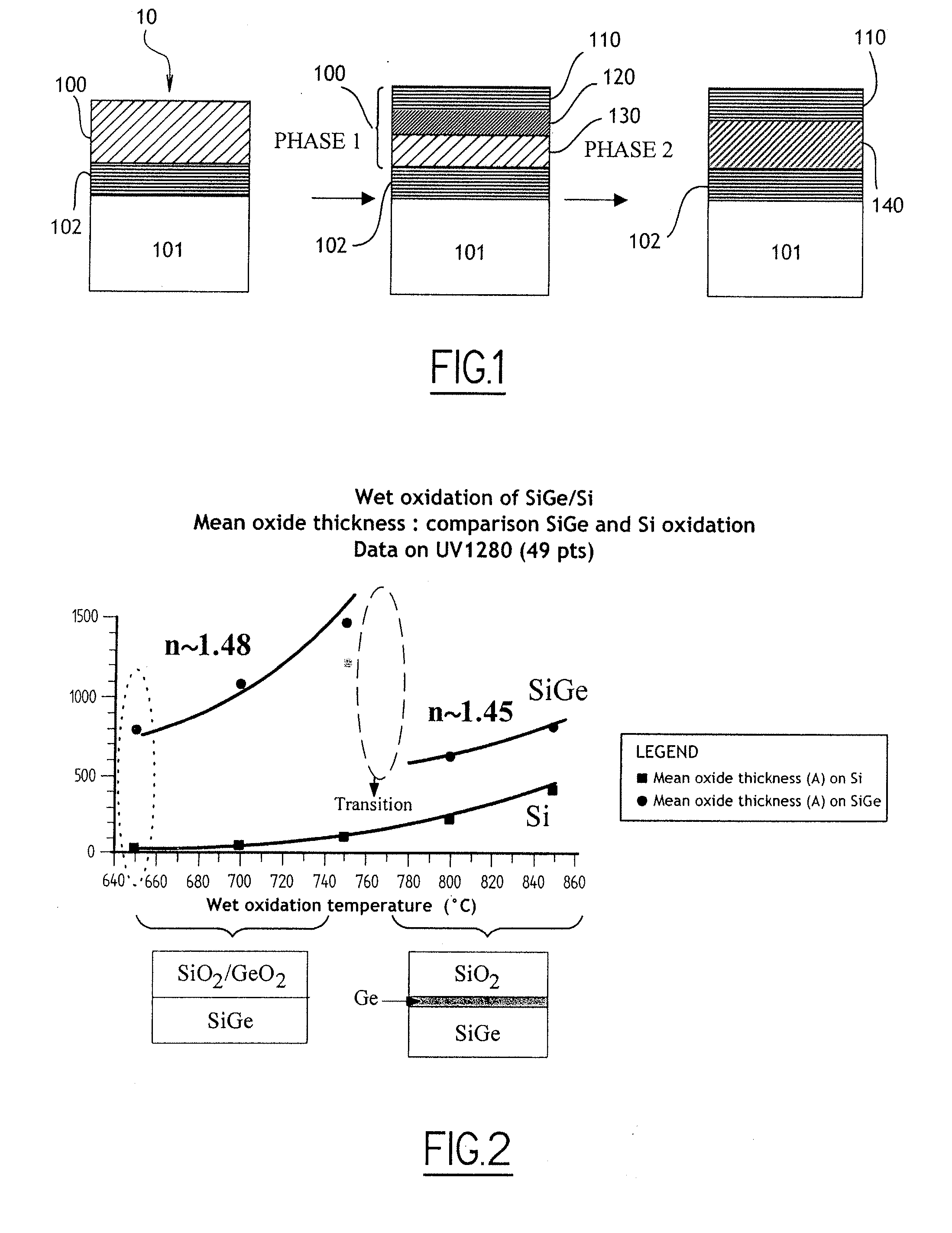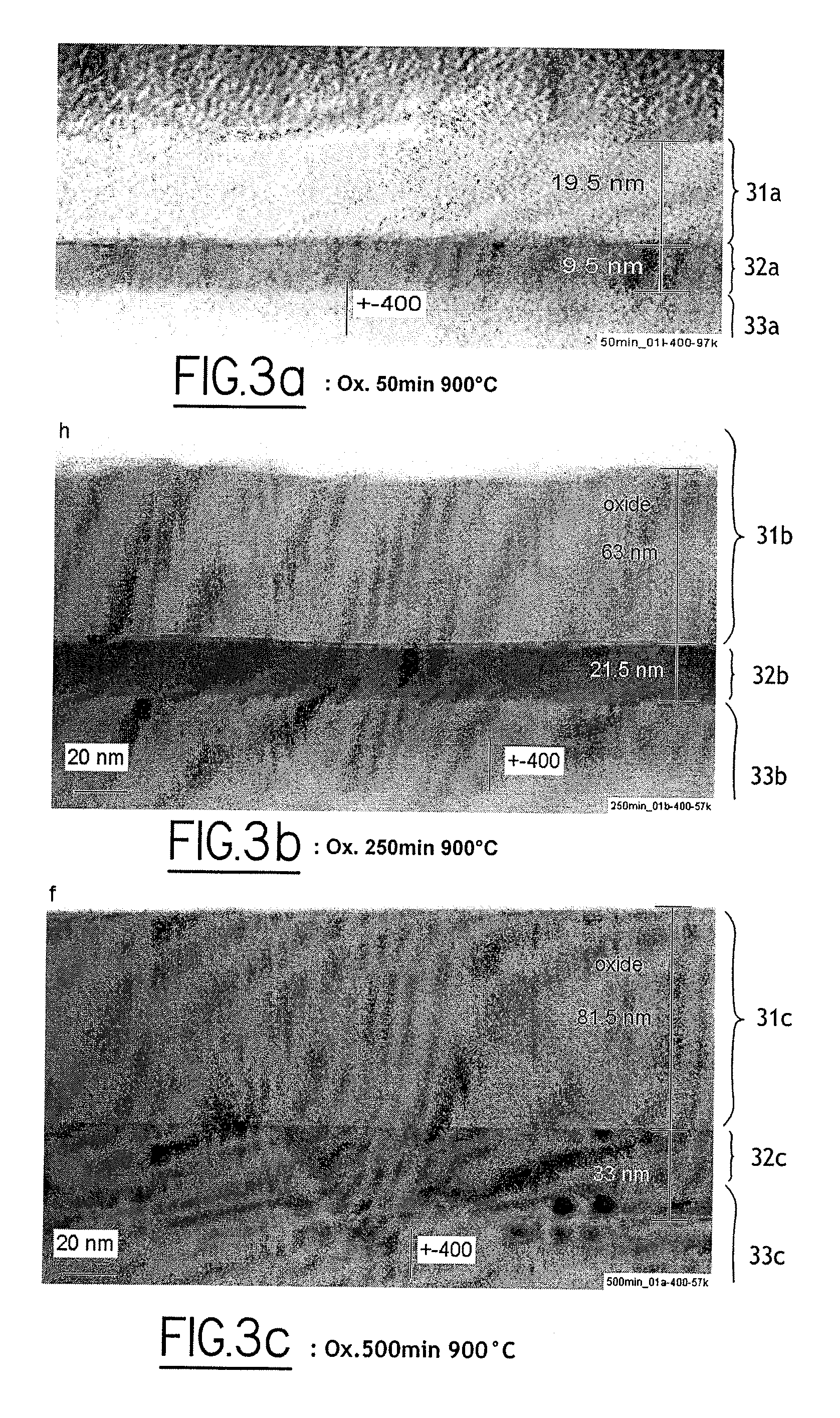Thermal oxidation of a sige layer and applications thereof
a technology of thermal oxidation and sige layer, which is applied in the direction of basic electric elements, semiconductor/solid-state device manufacturing, electric apparatus, etc., can solve the problems of annealing in an oxidizing atmosphere exposed to the drawback of creating defects in the crystal structure of the substrate, adding a step of deposition in the process, and causing pitting
- Summary
- Abstract
- Description
- Claims
- Application Information
AI Technical Summary
Benefits of technology
Problems solved by technology
Method used
Image
Examples
Embodiment Construction
Method for Oxidizing a Surface Region of a SiGe Layer
[0056] A first aspect of the invention is a method for oxidizing a surface region of a SiGe layer, the method comprising an oxidizing thermal treatment of the SiGe layer under an oxidizing atmosphere for oxidizing the surface region.
[0057] Such method comprises two phases: [0058] a first phase of oxidizing thermal treatment, which is carried out directly on the SiGe layer, and [0059] a second phase of high temperature annealing which is carried out on the SiGe layer after the first phase, in an inert atmosphere.
[0060] The first phase is carried out under an oxidizing atmosphere. It can be conducted as a dry thermal oxidation, or as a wet thermal oxidation.
[0061] This first phase is carried out so as to obtain an oxidized region of the SiGe layer which is thick enough for forming a capping oxide which can protect the underlying SiGe from pitting during the subsequent second phase.
[0062] Moreover, this first phase is also carr...
PUM
 Login to View More
Login to View More Abstract
Description
Claims
Application Information
 Login to View More
Login to View More - R&D
- Intellectual Property
- Life Sciences
- Materials
- Tech Scout
- Unparalleled Data Quality
- Higher Quality Content
- 60% Fewer Hallucinations
Browse by: Latest US Patents, China's latest patents, Technical Efficacy Thesaurus, Application Domain, Technology Topic, Popular Technical Reports.
© 2025 PatSnap. All rights reserved.Legal|Privacy policy|Modern Slavery Act Transparency Statement|Sitemap|About US| Contact US: help@patsnap.com



